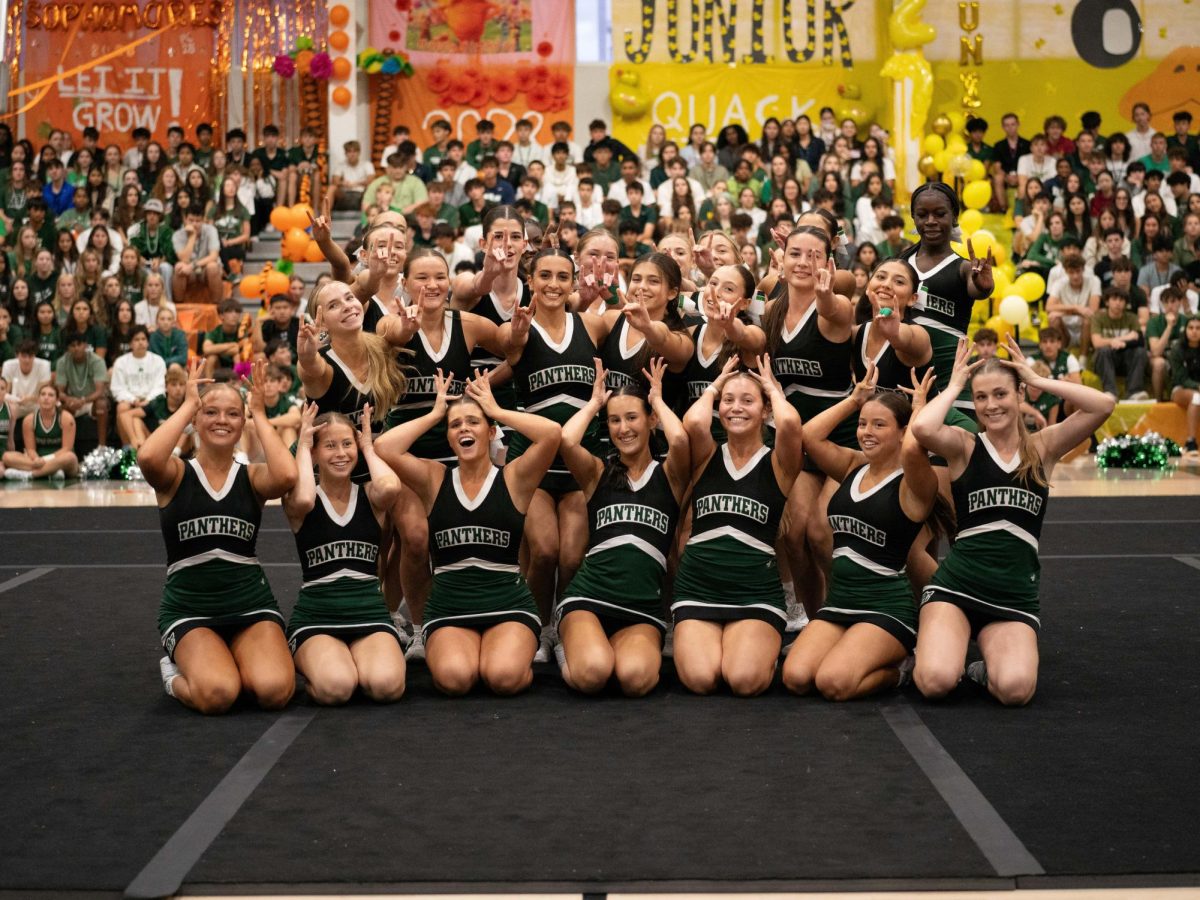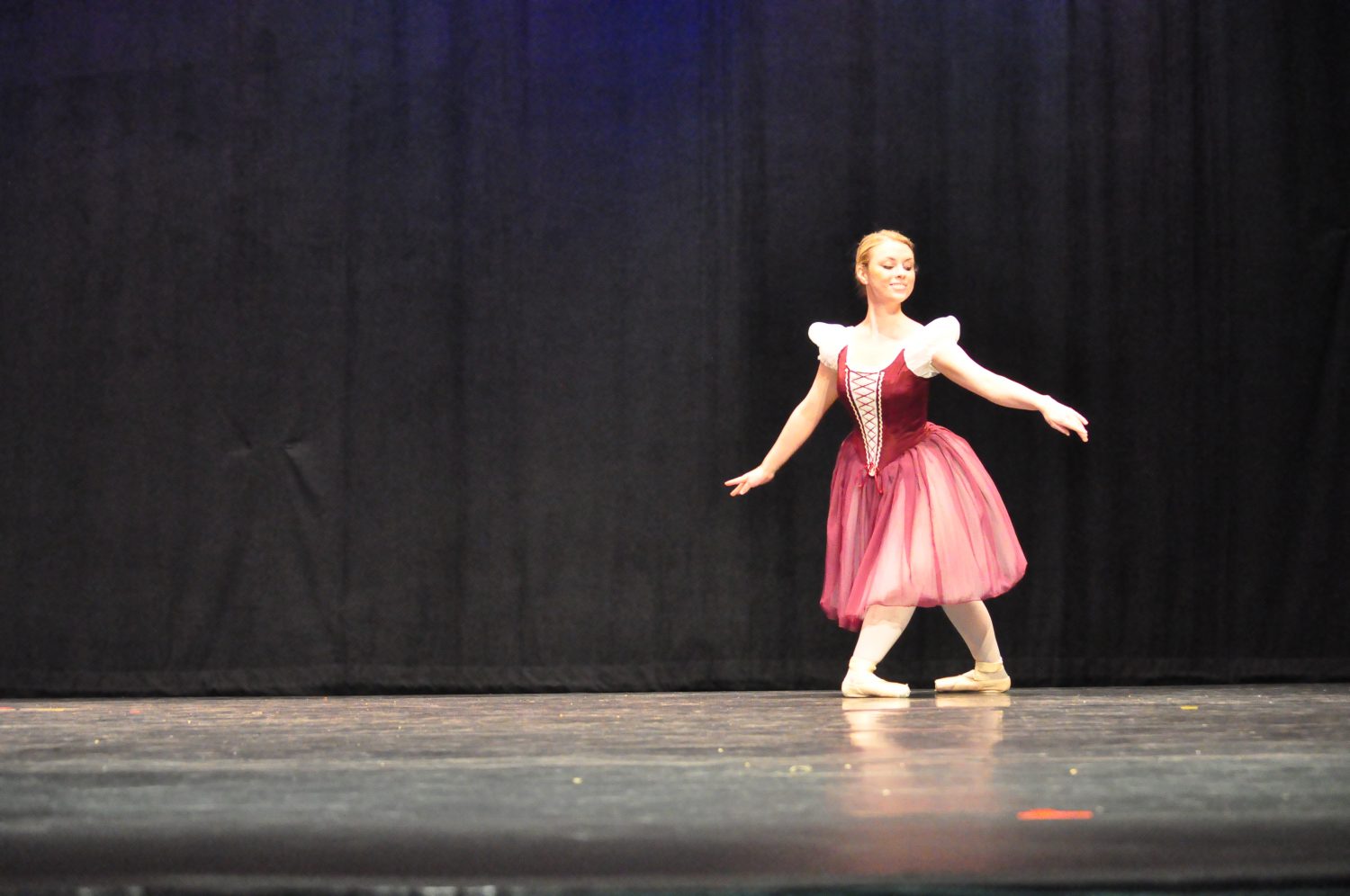As “Coppèlia” and “Mostly Classical” have come to a close, many would think that a Pine Crest dancer’s work would be done. That is so, so wrong. Not only are there still multiple Dance Etc. performances, but the dancers are also still taking ballet technique classes. Ballet dancers don’t just dance ballet here at the Pine- we also study ballet. We take standard Ballet Theory, Ballet History, and Kinesiology. With all these extra courses and components, why is Ballet Advanced not considered an honors class? Let’s review the facts. A typical student in the Ballet Advanced class will take 3 hours of ballet each week (and a few extra hours if they’re overachievers, of which there are many). This student will also attend a stretch and conditioning class, or “Floorbar” as we lovingly refer to it, once a week. There is also a weekly notes session, where Mrs. Gooden gives a lecture on one of the three disciplines: Theory, History, or Kinesiology. Ballet Theory is done each year and reviews the technical components of ballet, Ballet History covers a different era of ballet each year and explores why dance has evolved the way that it has, and Kinesiology covers a different part of the body each year and delves into how to use the muscles correctly and in good posture. You might be saying, “Dancers don’t take tests! How can Ballet Advanced be an honors class?” That’s funny because we have more testing than almost any other honors or AP class. We take exams on each of the three lecture portions, write ballet combinations and teach them for a grade, write an entire ballet variation and perform it for a grade, get tested on spelling and identifying common ballet movements, have a quiz on the meaning of various ballet terms, and take a “doing” exam on the positions of the body, pas de bourrées, and arabesques. We are also tested every two weeks on how well we perform the combinations that are given to us. There are very few ballet schools in the nation, including schools run by ballet companies, that teach the material that we learn from Mrs. Gooden. We do more work in ballet than you probably do in the majority of your purely academic classes. Kacey Suchocki, a junior, says, “It requires just as much work as any other honors class, if not more. The tests are hard.” But, I promise you, everyone ends up learning the material very well. Ask any advanced dancer the 5 things that make a step happen, and they will say, “Posture, placement, timing, level, and body usage,” quicker than they can recite the Pine Crest Honor Code. Ballet is even stricter than most classes. “We have to make up every class we miss,” says senior Hayley Beck. That is the reason why dancers never want to miss ballet- every class must be made up by the end of the semester or points are taken off your final grade. We all know that other honors classes have a much more relaxed attendance policy. Now you’re seeing my point. How exactly do I propose making Ballet Advanced into Ballet Honors? Put our major tests to the final day of exam week. Yes, I know that most Pine Crest ballerinas would complain, but they would all smile when they see the little boost that an extra .5 honors credit would give to their GPA! As ballet is a regular class, it brings down the GPA of dancers who have all Honors and AP classes. Some academic classes with Friday exams reschedule their testing period to earlier in exam week, so that would also be an option. “It should be AP because it’s a double period class. We get real grades, not just automatic As,” says senior Melissa Stephenson. Mrs. Gooden realized that the dancers deserved more credit, so she approached the Florida division of the board that controls AP testing. She sent them materials documenting the technique classes and the other information that we learn but never received a response. This was 6 to 7 years ago. Obviously if it was made an honors course, changes would have to be made. “The technique grading would be much stricter, and only the advanced class would be made an honors course,” says Mrs. Gooden. Sophomore Carolina Soto agrees that the honors credit would be helpful. “We’ll become better dancers,” says Carolina as she believes that the honors credit could act as an incentive for the dancers to strive for an even higher level of technique in ballet. There are safeguards in place currently that would keep people from joining ballet just for the honors credit. Dancers are evaluated before they are accepted into the Ballet Advanced class. According to Mrs. Gooden, the dancers would be evaluated on an even stricter scale if the class was to be considered an honors course. If you still don’t believe that Ballet Advanced dancers deserve honors credit, let me tell you about some of our most recent alumni’s credentials. Danielle Wancier has received her Masters in a ballet-related field from Ohio State University and is now on faculty at two local colleges. Lindsay Berliner is a senior at University of California- Irvine and has toured throughout Spain with a troupe of dancers. Robin Cherof graduated from Vassar with degrees in Art History and Italian. As stated in ballet alumna Mandy Oaklander’s BusinessWeek article, she has decided that the job market in dance is just as volatile as the job market in art curation, so she is currently dancing in New York City. Mandy Oaklander is a Pine Crest ballet alum herself and is an established journalist. Sandhurst Tacama John Miggins trained at The Rock in Pennsylvania and later went on to be a contestant on Bravo’s Make Me a Supermodel. He is an up-and-coming television personality and has hosted multiple mainstream television shows. Our current ballet students also have an impressive resumé of dance experience. Current PC dancers have attended summer intensives at Atlanta Ballet, Orlando Ballet, Central Pennsylvania Youth Ballet, American Ballet Theatre, Joffrey New York, The Rock, Boston Ballet, Princeton Ballet, and Boca Ballet Theatre, just to name a few. I didn’t write this article so that Mr. Clark would look at it and put a little H next to the Ballet Advanced course for next year. I didn’t write this article so that the dancers could storm into the Upper School Office and demand honors credit. I wrote this so that people would know how much PC dance isn’t just dancing. Sure, you can learn what a plié is, but Pine Crest dancers are lucky enough to learn what muscles contribute to that plié, the history of the step, and how to make a plié look like so much more than a slight flexion of the knees. Pine Crest needs to give more recognition to those involved in the arts, and I don’t know anyone who would complain if they received a little “extra credit” for his or her hard work.
Why Not Honor Hard Work With Honors?
February 14, 2011
Categories:
By: Natalie Yezbick
































![Stranger Things 4: What to Expect [Warning: Contains Spoilers]](https://pcpawprint.com/wp-content/uploads/2021/11/StrangerThings4-900x473.jpeg)























































